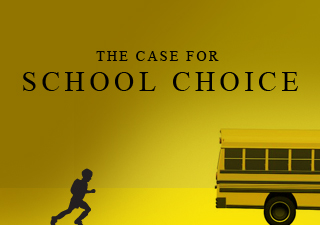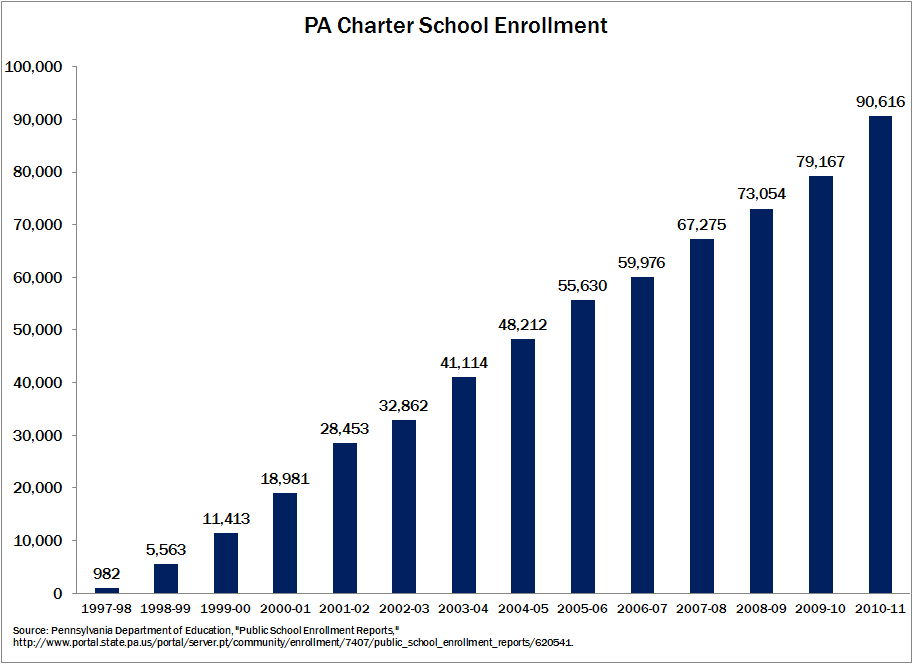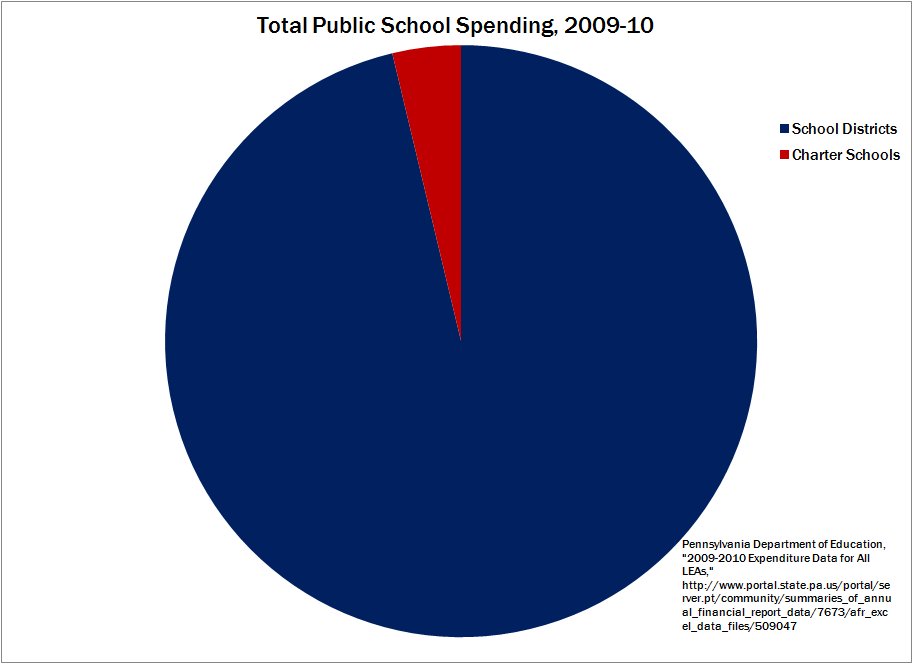Fact Sheet

Charter School Reform
Pennsylvania charter school enrollment grew from 982 students in 1997 to 91,000 in 2010, as more parents exercised choice in their children’s education. On average, charter schools receive and spend only about 83 percent of what school districts spend for each student. Allowing alternative charter school authorizers would increase opportunities for new and innovative charter schools.
Should Pennsylvania make changes to its public charter school laws?
Charter schools are self-managed public schools that receive a charter to operate by local school districts. Cyber charter schools are full-time online institutions directly approved by the Pennsylvania Department of Education.
School districts currently authorize charter schools, while simultaneously competing with charter schools for students. This is akin to having McDonald’s approve the opening of a new Wendy’s next door. Allowing alternative authorizers, including the state (as is done for cyber charter schools) or universities, as many other states do, would increase the opportunities for new and innovative charter schools.
Do parents want charter schools?
Since charter schools were established in Pennsylvania in 1997, their enrollments have skyrocketed, demonstrating their popularity among families. Parents value the ability to choose where to educate their children. Today, there are 145 charter schools serving 91,000 students. They include 12 cyber charter schools with almost 28,000 students, and offer parents an alternative to their local traditional public schools.

How are charter schools funded?
Funding for charter schools follows students who leave a particular school district and enroll in a local charter school. Charters receive a portion of the per-student spending of the district of origin, while school districts retain the rest. On average, charter schools receive and spend only about 83 percent of what school districts spend for each student. In total, charter schools received $945 million in 2009-10, about 3.7 percent of total public education spending in the commonwealth.
Do charter schools drain public schools of desperately needed funding?
Charter schools receive only a fraction of the per-student funding allocated to public schools-3.7 percent of total public school spending. The portion that public schools retain-for children they no longer have to educate-effectively raises the amount they can devote to each student, or can be used to lower local property taxes. For example, the Philadelphia School District spent $13,272 per student in 2009-10. The district had to pay $8,184 for every non-special needs charter school student, retaining $5,089 for every child it was no longer responsible for educating.
Even if two-thirds of students left for charter schools, the district would retain 60 percent of funding to serve one-third the number of children-driving spending per student to $22,200 per student for those who remain in the district.

Are charter schools accountable?
Charter schools are evaluated by the same standards as district schools. But unlike traditional public schools, failing charter schools risk losing their charter and being shut down. Public schools should face the same accountability measures charter schools do-with a performance contract that is regularly reviewed, which is usually every five years. Moreover, charters face the highest accountability standard-parental choice. No charter school gets any funding unless parents choose it for their child.
# # #
The Commonwealth Foundation (www.CommonwealthFoundation.org) is Pennsylvania’s free market think tank. For more see our Fall Legislative Guide.